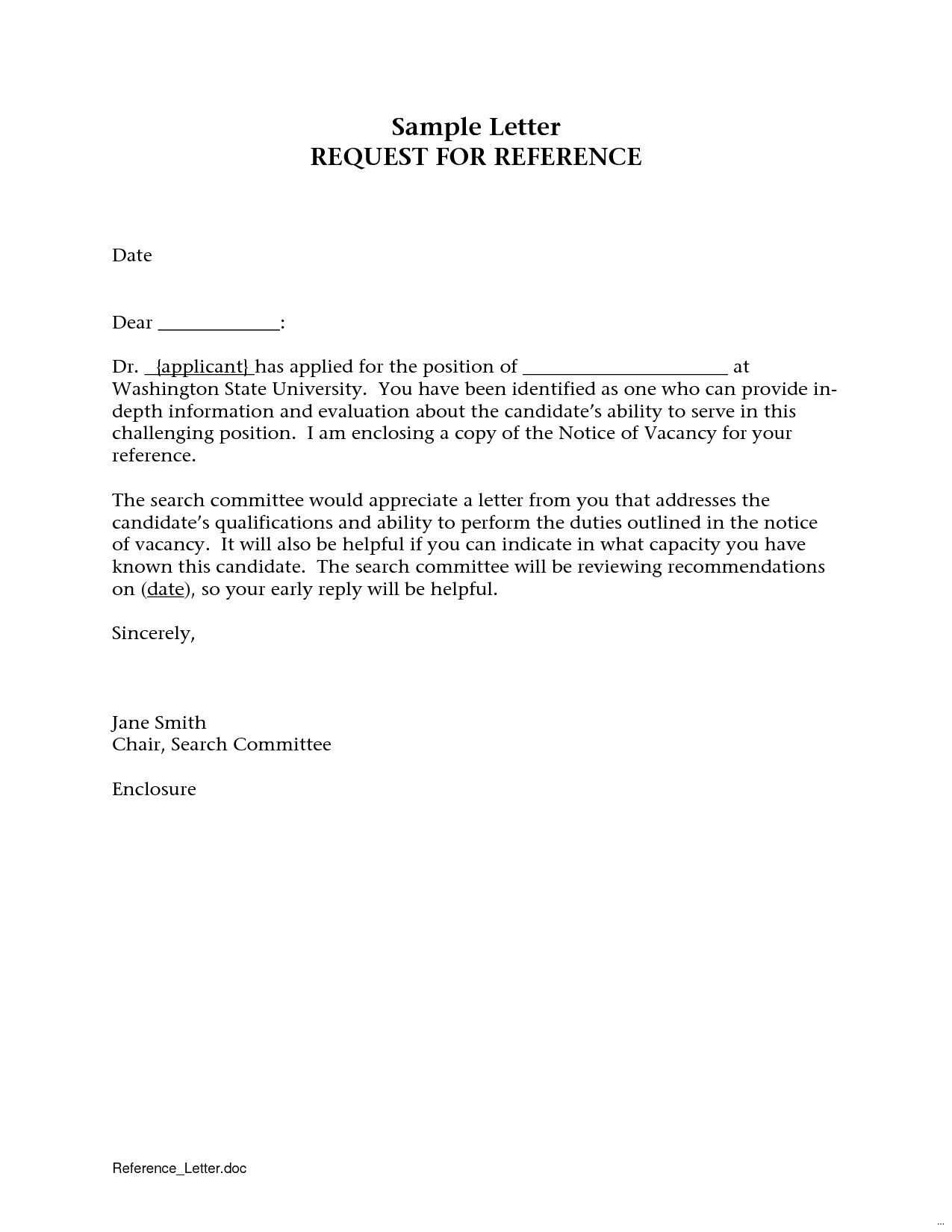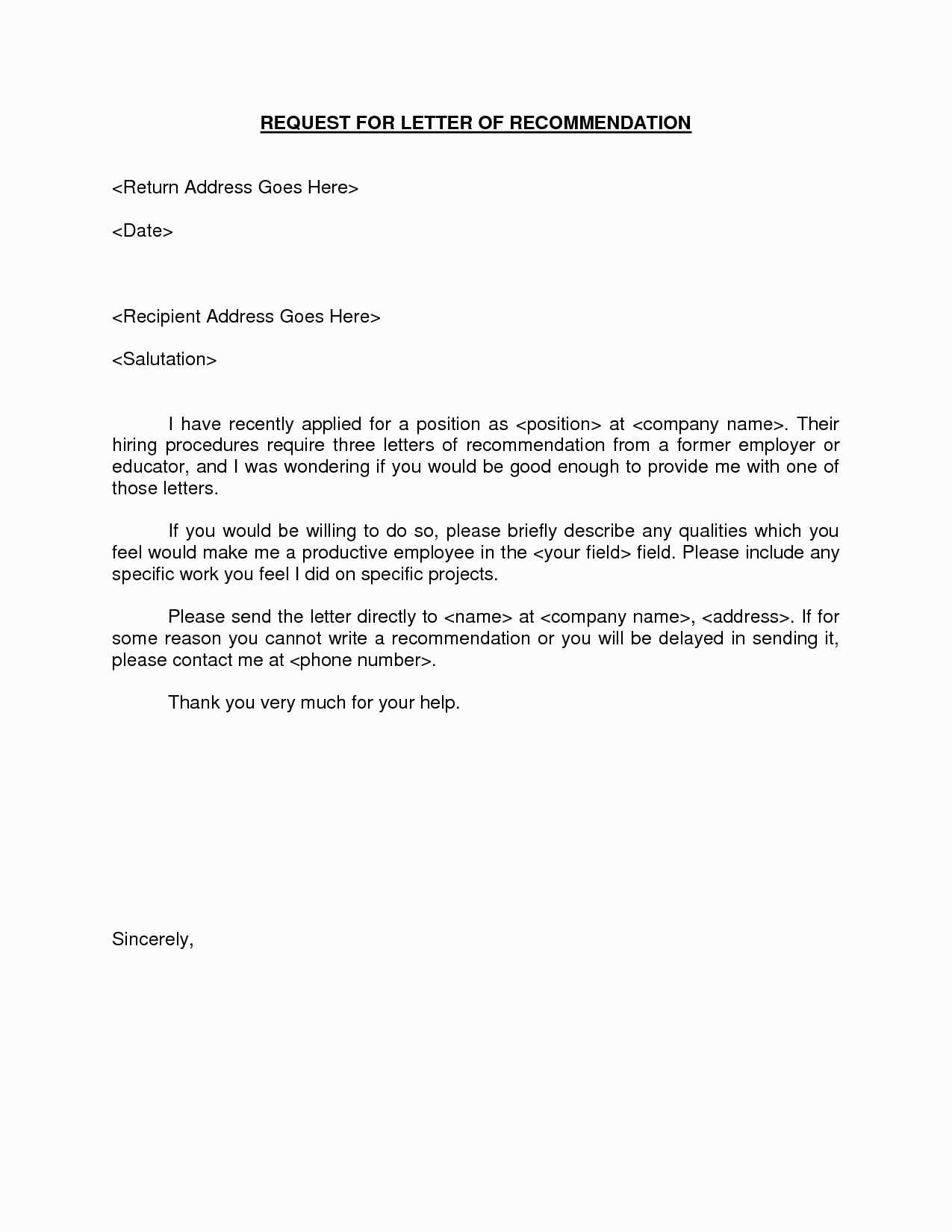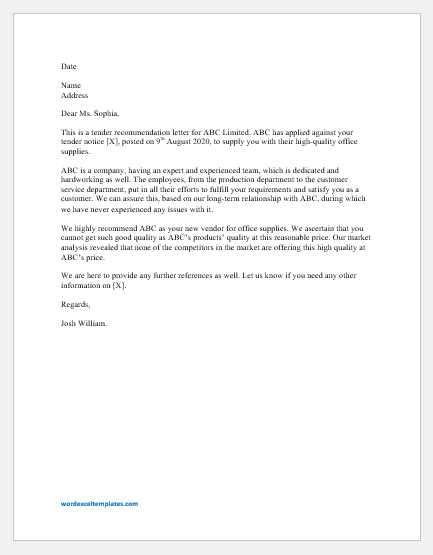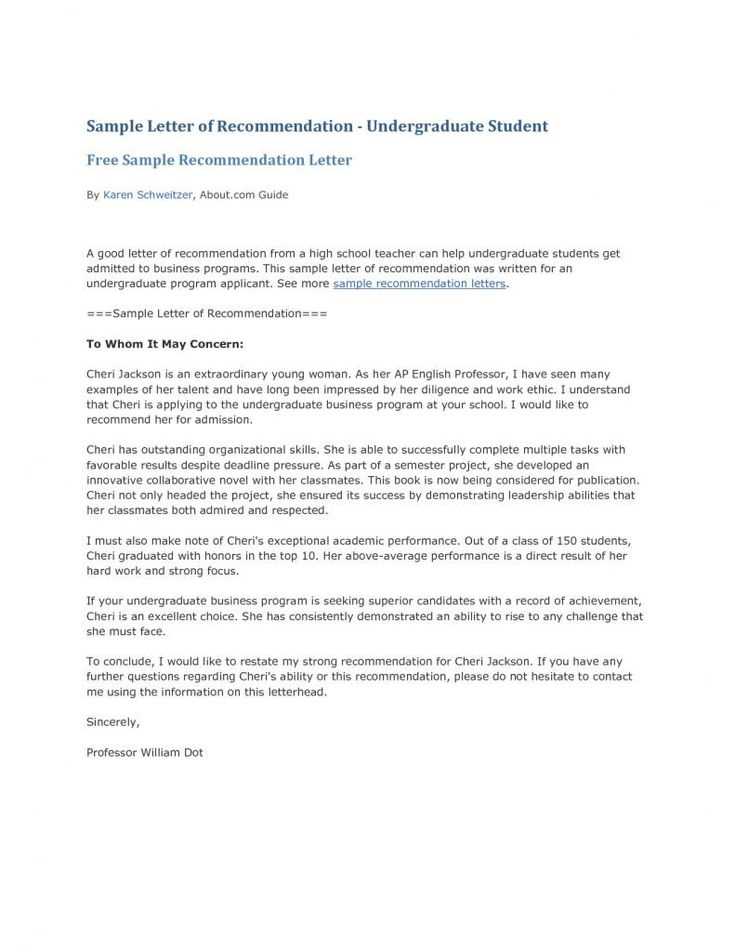Template for Requesting a Recommendation Letter

Asking someone to support you with a formal endorsement can be an important step in advancing your career or academic goals. It’s crucial to approach this process in a respectful and organized manner to ensure your request is well-received. The right approach not only improves your chances of getting a positive response but also reflects your professionalism.
In this section, we will guide you through how to craft a polite and effective approach. By focusing on the key elements that make your message clear and compelling, you will be able to increase the likelihood of a favorable reply. Whether you’re seeking a professional endorsement or a recommendation for academic purposes, understanding how to ask properly is essential.
Understanding the structure of your communication is important, as it shows the level of preparation and thought you’ve put into your request. This can make all the difference in encouraging the person you’re reaching out to take the time to help you.
How to Craft a Letter Request
When asking someone to vouch for you or share their support in a formal manner, clarity and politeness are key. The way you present your need can significantly influence how the person responds. It’s essential to structure your message so that it’s both respectful and clear, making it easy for the recipient to understand your request and feel comfortable agreeing to help.
Start by being clear and direct. Explain why you’re seeking their endorsement and what you’re hoping to achieve with their support. It’s important to give them enough context so they can provide a meaningful response. Be concise but informative, making sure to convey your goals and the reasons why you’ve chosen them to assist you.
Next, consider the tone of your message. A polite and appreciative tone will set the right mood for the recipient to feel inclined to offer their help. Avoid being overly casual or too demanding, as this can make the person feel uncomfortable or pressured. Instead, aim for a professional and respectful approach throughout the communication.
Finally, don’t forget to show gratitude. Always thank the person in advance for their time and consideration. Whether or not they choose to assist you, expressing your appreciation is crucial in maintaining a positive relationship.
Key Elements to Include in Your Request
When reaching out to someone for support, it’s important to include all the necessary details to make it easier for them to respond positively. By clearly outlining your intentions and providing essential information, you give the person the context they need to offer a meaningful endorsement. Here are the key elements that should be part of your message.
Clear Purpose and Context

Begin by stating the reason behind your need for help. Whether it’s for a job application, academic purposes, or any other professional request, explaining the context will give the recipient a clear understanding of why you’re asking them to assist you. This also allows them to tailor their response to suit the specific situation.
Specific Details and Expectations

It’s essential to be specific about what you’re hoping to receive from the person. Are you looking for a general endorsement or something more specific? Providing details about what kind of support you need will help them craft a response that aligns with your goals.
| Element | Purpose |
|---|---|
| Introduction | Provide context for why you’re reaching out. |
| Reason for Request | Explain the importance of the support you’re asking for. |
| Specifics | Detail the kind of support you’re looking for. |
| Timeline | Inform the person of any deadlines if applicable. |
| Gratitude | Express appreciation for their time and consideration. |
Why a Professional Request Matters
How you approach someone for assistance can significantly influence their willingness to help. A well-crafted and respectful message demonstrates your professionalism and ensures that the recipient takes your request seriously. By following a formal approach, you increase the likelihood of receiving the support you need, while also maintaining a positive impression.
First Impressions Count
When you reach out to someone, whether they are a colleague, supervisor, or mentor, the way you frame your message sets the tone for your relationship. A professional communication style shows respect for the person’s time and makes it easier for them to consider your request. It communicates that you value their opinion and assistance, which often encourages a favorable response.
Demonstrating Your Seriousness
Approaching the situation with a formal tone signals to the recipient that the matter is important to you. It highlights that you are committed and prepared, which in turn helps the other person take your request seriously. A professional approach increases the chances that your message will be treated with the same level of importance.
Customizing a Template for Your Needs
While having a structured outline can be helpful when reaching out for support, it’s essential to adapt it to your unique situation. A generic approach may not convey the personal connection or specific details necessary to make your message stand out. Customizing your communication ensures that it aligns with your goals and resonates with the recipient.
Start by tailoring the content to reflect your relationship with the person you’re contacting. Mention specific interactions or experiences that highlight why you’ve chosen them for this role. Additionally, adjust the tone to suit the formality of the situation, whether it’s for a casual request or a more formal professional need.
Including relevant details will also strengthen your message. Be clear about what you’re seeking and how it aligns with your objectives, whether it’s for a job application, academic pursuit, or another goal. This approach allows the recipient to respond in a more focused and helpful manner, increasing the likelihood of receiving the assistance you need.
Common Mistakes to Avoid in Requests

When reaching out to someone for assistance, it’s important to approach the situation thoughtfully. Even small mistakes in how you phrase your request can have a significant impact on how it’s received. Avoiding common errors ensures that your message is respectful and increases the likelihood of getting a positive response.
One of the most frequent mistakes is being too vague. Failing to provide enough context about what you’re asking for can leave the recipient unsure of how to help. Be clear and specific about your needs to make it easier for them to offer meaningful support.
Another mistake is being overly casual or demanding. It’s important to maintain a professional tone and be mindful of the recipient’s time. Avoid sounding entitled or impatient, and always express gratitude for their consideration.
Lastly, not giving enough time for a response can also backfire. Rushing the person or imposing tight deadlines may cause unnecessary pressure. Always consider the time they need to properly assist you and plan accordingly.
Best Practices for a Polite Approach
When asking someone for assistance, your approach can greatly influence the outcome. A polite and respectful tone is key to ensuring that your request is well-received. By following a few best practices, you can convey professionalism while showing appreciation for the recipient’s time and effort.
Start by addressing the person respectfully and using a courteous greeting. Always acknowledge their importance and express why you value their input. This helps to create a positive tone and makes the recipient feel appreciated from the very beginning.
It’s also crucial to be clear and concise without being demanding. Make sure to provide enough context for them to understand your needs, but avoid overwhelming them with excessive details. Additionally, always allow for flexibility by expressing understanding of their time constraints.
Finally, conclude with a note of gratitude. Thank the person in advance for considering your request and offer to provide any additional information if needed. This shows that you value their assistance and are willing to help make the process easier for them.
Follow-Up Strategies After Sending
Once you’ve sent your initial message, it’s important to stay proactive without being overly persistent. Following up appropriately ensures that your request hasn’t been overlooked and reinforces your commitment to the matter at hand. However, balancing respect for the recipient’s time with the need for a response is crucial to maintaining a positive relationship.
Timing Your Follow-Up
Knowing when to send a follow-up is key to not seeming impatient or too demanding. Typically, it’s best to wait about a week or two before checking in. However, consider the urgency of the situation and the person’s schedule. If it’s a time-sensitive request, a polite reminder after a few days might be appropriate.
What to Include in a Follow-Up
Your follow-up message should be brief, polite, and to the point. Avoid restating your entire original request; instead, gently remind them of the initial communication and politely ask if they’ve had a chance to consider it. Here are some important elements to include:
- Start with a friendly greeting and acknowledge their busy schedule.
- Briefly refer to the original message, highlighting the date it was sent.
- Express appreciation for their time and assistance.
- Conclude by offering to provide any additional information if needed.
By maintaining a considerate tone and focusing on their availability, you increase the likelihood of receiving a response without making the recipient feel pressured.